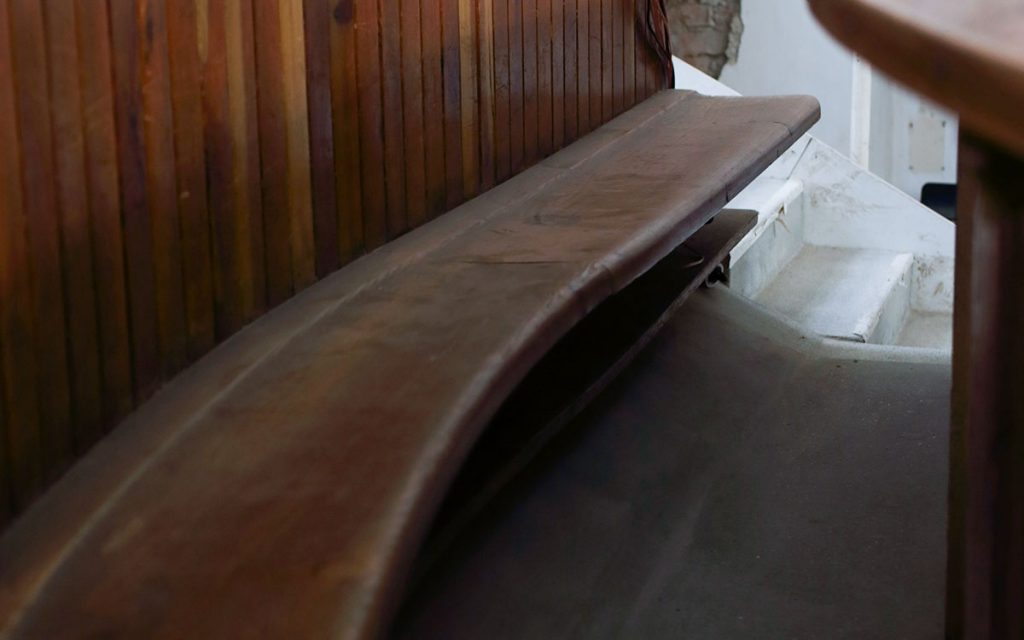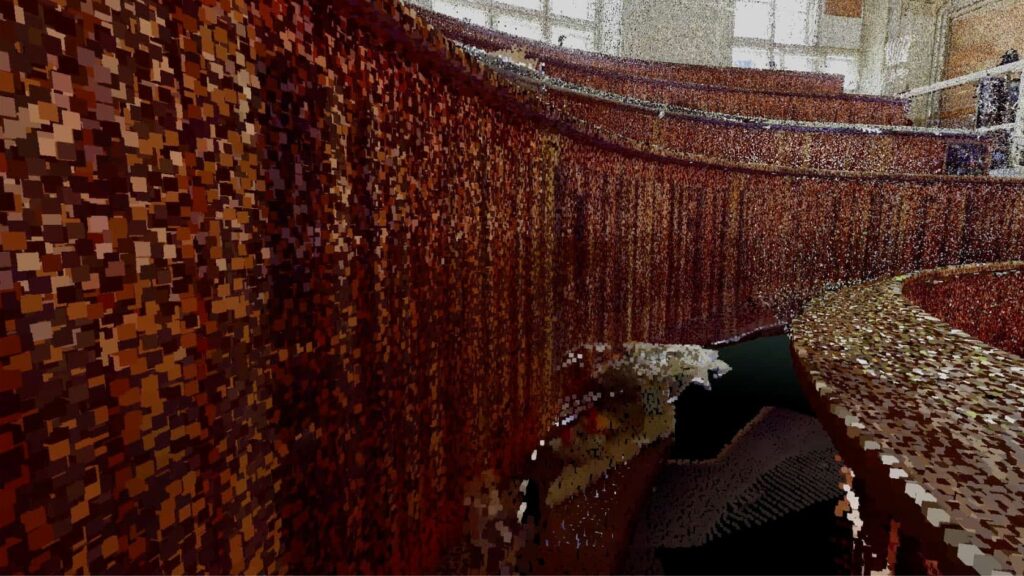by Dario Sanfilippo, 2019
commissioned by rotting sounds
production by Thomas Grill
Electronics, algorithm, transducers, resonant bodies

Phase Transitions is a long-form composition for an autonomous adaptive ecosystem operating in real-time which explores the idea of digital deterioration and the behavioural changes in dynamical systems with varying parameters. The work is based on feedback delay networks with nonlinear transfer functions, specifically, saturating units (also known as soft-clipping functions) whose purpose is to ensure stability in self-oscillating conditions but also to make the deterioration process possible.
Saturators transform signals so that amplitude values within a certain range are passed through almost untouched, while values outside that range are compressed never to exceed the limits of the saturators. The more the signals are far from the allowed range (so to speak), the more the signals are distorted (i.e., signals deteriorate), which results in more frequency components being added to the network.
The feedback coefficients determine how much of a signal is fed back into the network, while the lengths of the delay lines determine after how much time a signal will start to recirculate. The first parameter is responsible for the deterioration process as it affects the magnitude of the signals going through the saturators, which will also change the spectral output because of the added frequencies, while the second parameter is responsible for reinforcing or dampening specific frequencies in the spectrum. These are the two varying parameters in the system.
The delay lengths are chosen as powers of prime numbers. It is enough to know that that will favour a homogeneous distribution of the energy over the whole spectrum. The initial feedback coefficients correspond to the self-oscillating threshold of the network. It means that, after being initiated, the network could theoretically operate endlessly without any external energy being provided. In this case, the network is initially triggered by an ideally short impulse (a Dirac) that sets the system into an operating state, producing sparse tones.
The system is coupled with the environment through a microphone (input) and a resonating wooden bench (output). The signal from the microphone is processed so that some information is extracted and used to pilot the delay lengths. The analysis window of this process is one hour. It means that there is no immediate cause-effect relationship between what happens in the environment and the output of the system: theoretically, a perturbation in the environment will reach its maximum effect after one hour, but the system’s output is continuously affected by the past environmental conditions.
The feedback coefficients are set to grow of a magnitude of 2 in about three months. Roughly, that is the limit after which the saturators will be full and will have no further effect except producing broadband noise. That is indeed what sets the life span of the system.
A nonlinear system with several interacting feedback loops and varying parameters is expected to generate phase transitions. These are a radical change in the state of the system, and they show particularly rich and nontrivial dynamical behaviours. The last and perhaps most important aspect of the work is an adaptive mechanism for the growth of the feedback coefficients used to explore microscopically such behaviours: when a phase transition is detected, the feedback growth is radically decreased to almost freeze the current state variables until the transition is over. Interestingly, the detection process itself can either trigger or suppress a transition, resulting in a system that, by observing itself, will also affect its behaviour, which is what generates the formal development of the piece.
Archive
You can find archived sounds of the piece (1 min per hour) at the Rotting Sounds Archive.
